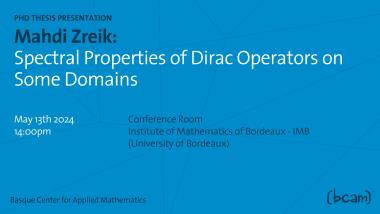BCAM researchers, together with scientists from other Basque and Canadian Institutions, publish a paper on how Amyloid-β (Aβ) and Glutamate accumulate in the emergence of Alzheimer's, opening to new therapeutic opportunities
- The authors are Giulio Bonifazi, Celia Luchena, Adhara Gaminde-Blasco, Carolina Ortiz-Sanz, Estibaliz Capetillo-Zarate, Carlos Matute, Elena Alberdi and Maurizio De Pitta, researchers from the Basque centers BCAM, Department of Neurosciences, University of the Basque Country, Achucarro Basque Center for Neuroscience; Centro de Investigación Biomédica en Red en Enfermedades Neurodegenerativas (CIBERNED); and from the Department of Physiology, University of Toronto, and Krembil Research Institute, University Health Network also in Toronto (Canada).
- Through interdisciplinary collaboration and advanced computational modeling, the research elucidates the nonlinear nature of pathogenic processes, highlighting promising opportunities for intervention and understanding the complexities of neurodegenerative diseases.
Researchers from the Basque centers BCAM, Achucarro Basque Center for Neuroscience and the Department of Neurosciences of the UPV/EHU; together with the University of Toronto and Krembil Research Institute, Canada, have collaborated in a pioneering study that sheds light on the molecular mechanisms underlying Alzheimer's disease. Led by Giulio Bonifazi, a PhD graduate from BCAM in December 2023, the study explores the interaction between amyloid-β (Aβ) and glutamate in the development of Alzheimer's disorder.
The study, published in the prestigious Elsevier journal Neurobiology of Disease, delves into the intricate molecular biology behind the emergence Alzheimer's disease, when the disease goes still undetected and patients are not aware of their fate. Giulio Bonifazi, the lead author of the study explains: “We focus on the phenomenon of hyperexcitability which is often observed in Alzheimer’s patients with little to none cognitive deficits. Our aim was to understand whether we can use the phenomenon to diagnose Alzheimer’s onset in advance”.
Using advanced computational models, the team led by Bonifazi characterized the conditions for accumulation of glutamate in the brain in the presence of Aβ plaques, a well known marker of Alzheimer’s. “We found that glutamate accumulation and neural hyperactivity are not proportional, as they depend in a variegated, namely nonlinear manner on Aβ plaques, and this nonlinearity can explain different Alzheimer’s”, Bonifazi says.
“The innovative perspective pioneered by this study is that we put emphasis on the nonlinear nature of the molecular interactome behind Alzheimer’s”, Maurizio De Pitta, the senior author coordinating the study, explains. “The nonlinear framework of the disorder naturally accounts for the so-called “degeneracy” of the pathology, that is the possibility to develop the same symptoms but in different ways. At the same time we demonstrate that different paths to Alzheimer’s onset can be arguably treated differently, with some leading to better outcomes than others”.
The study’s impact well extends beyond Alzheimer’s as many other pathologies can be described in the framework of nonlinear manifold theory. “It is our hope that thanks to our interdisciplinary collaboration with Achucarro, our research could help pave the road for new approaches in therapeutic exploration in neurodegeneration and aging-related cognitive decline”, Bonifazi concludes.
ABSTRACT
The pathophysiological process of Alzheimer's disease (AD) is believed to begin many years before the formal diagnosis of AD dementia. This protracted preclinical phase offers a crucial window for potential therapeutic interventions, yet its comprehensive characterization remains elusive. Accumulating evidence suggests that amyloid-β (Aβ) may mediate neuronal hyperactivity in circuit dysfunction in the early stages of AD. At the same time, neural activity can also facilitate Aβ accumulation through intricate feed-forward interactions, complicating elucidating the conditions governing Aβ-dependent hyperactivity and its diagnostic utility. In this study, reasearchers use biophysical modeling to shed light on such conditions. Their analysis reveals that the inherently nonlinear nature of the underlying molecular interactions can give rise to the emergence of various modes of hyperactivity. This diversity in the mechanisms of hyperactivity may ultimately account for a spectrum of AD manifestations.
Related news
BCAM people
BCAM people




